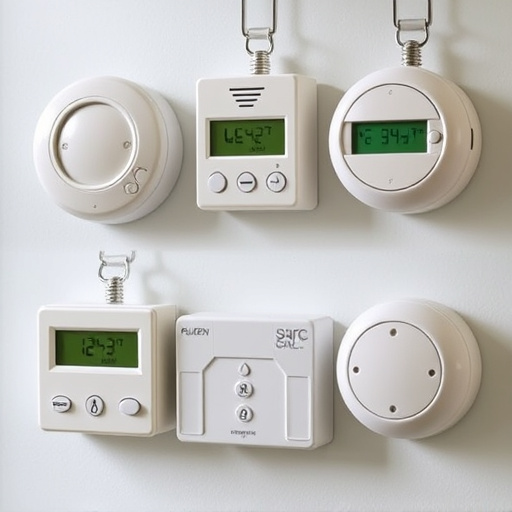Wearable security systems, particularly the Personal Alarm With Phone Alert, are transforming personal safety by offering discreet yet powerful tools. These devices, worn as jewelry or integrated into clothing, use accelerometers and GPS to detect unusual movements and automatically send alerts to pre-programmed contacts via loud alarms and phone calls, swiftly summoning help during emergencies. Key trends include sophisticated panic features, real-time location tracking via mobile apps, and automatic alert systems, enhancing accessibility and proactive safety measures in today's digital landscape.
“Staying safe has never been more portable. Wearable security systems, armed with panic features, offer revolutionary personal protection. This article explores how these innovative devices work, from the basics of understanding wearable tech to delving into their life-saving potential through personal alarm with phone alert functionality. We’ll uncover benefits across various scenarios and gaze into the future, highlighting emerging trends and innovations shaping this dynamic field.”
- Understanding Wearable Security Systems: The Basics
- Personal Alarm With Phone Alert: How It Works
- Benefits and Use Cases of Panic Features
- Future of Wearable Security: Trends and Innovations
Understanding Wearable Security Systems: The Basics
Wearable security systems, often in the form of devices like personal alarms with phone alert capabilities, are revolutionizing personal safety. These innovative tools allow individuals to protect themselves discreetly and effectively in various situations. At their core, they typically include a small, lightweight device that can be worn as a necklace, bracelet, or even integrated into clothing. This wearable unit houses sensitive technology, such as accelerometers and GPS trackers, which detect unusual movements or patterns indicating potential danger.
When activated manually or triggered automatically due to sudden movement or an impact, these devices sound loud alarms, often accompanied by automated phone alerts sent to pre-programmed contacts. This two-pronged approach—a physical alarm and a digital notification—ensures that help can be summoned quickly during emergencies, providing users with peace of mind and increased security while they are on the go.
Personal Alarm With Phone Alert: How It Works
A Personal Alarm With Phone Alert is a cutting-edge wearable security system designed to keep individuals safe and informed. When activated, this device sends out a high-decibel alarm signal, alerting nearby people and authorities of an emergency. Simultaneously, it automatically dials pre-set phone numbers, ensuring immediate assistance reaches the wearer. This dual action provides a rapid response, making it an effective tool for personal safety.
The process is simple yet powerful; pressing the alarm button on the wearable device triggers a sequence of events. It sends out acoustic signals and uses GPS to pinpoint the user’s location, which is then transmitted to the emergency contacts. This real-time data allows friends, family, or emergency services to swiftly locate the wearer and respond accordingly, making it an invaluable feature for personal security and peace of mind.
Benefits and Use Cases of Panic Features
Panic features in wearable security systems offer a powerful tool for personal safety, providing users with an immediate and discrete means of alerting others to potential danger. These features are especially beneficial for individuals who frequently find themselves in isolated or unfamiliar environments, such as late-night walks, early morning commutes, or outdoor adventures. A simple press of a button on a wearable device triggers a Personal Alarm With Phone Alert, instantly connecting the wearer to emergency contacts and services. This swift action can deter potential threats and ensure prompt assistance.
Use cases for panic features are diverse and far-reaching. For instance, they are invaluable for women who may face unwanted advancements or dangerous situations while alone. Similarly, individuals with medical conditions that require immediate attention can rely on these alarms to signal distress swiftly. In a group setting, a panic feature can help organize a response during an emergency, allowing users to quickly alert their companions and coordinating evacuation efforts. This technology empowers individuals to feel more secure in their daily lives, knowing they have a personal safety net at their fingertips.
Future of Wearable Security: Trends and Innovations
The future of wearable security systems is promising, with continuous innovations aimed at enhancing personal safety and peace of mind. One notable trend is the integration of advanced panic features that go beyond traditional alarms. Wearables are increasingly equipped with sensors capable of detecting unusual movements or activities, triggering automatic alerts to emergency contacts or local authorities. This development is particularly beneficial in scenarios where an individual might be unable to manually activate an alarm, such as during outdoor activities or in situations requiring swift response times.
Another emerging trend is the synchronization of wearable security systems with mobile applications, enabling users to receive real-time updates and control their personal alarms remotely. This includes features like location tracking and personalized notification settings. The integration of Personal Alarm With Phone Alert functionality allows wearers to quickly notify others in case of distress, ensuring rapid response times. These innovations not only make personal security more accessible but also empower individuals to take proactive measures for their safety in an increasingly digital world.
Wearable security systems, particularly those with integrated panic features, offer a revolutionary personal safety net in today’s digital era. As we’ve explored, understanding the basics of these devices and their capabilities, such as the Personal Alarm With Phone Alert, is key to harnessing their benefits. The future looks bright for this technology, with trends pointing towards enhanced connectivity, improved durability, and more sophisticated alert systems. By leveraging these innovations, individuals can stay protected while navigating various environments, ensuring peace of mind and swift assistance during emergencies.
